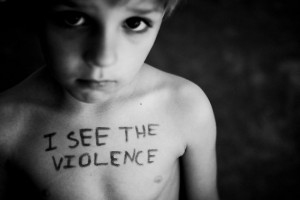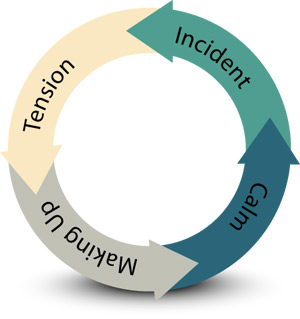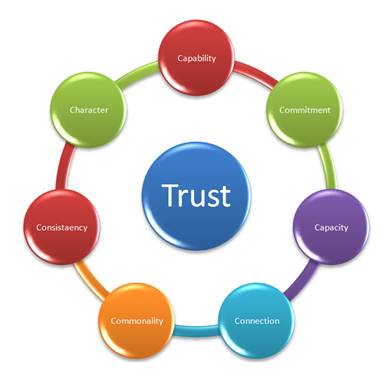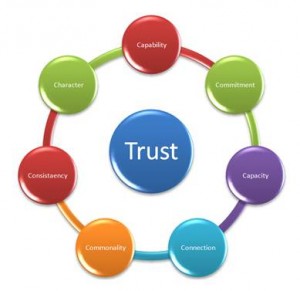
by Madeleine | Aug 24, 2017 | Positive People
Go placidly amid the noise and haste,
and remember what peace there may be in silence.
As far as possible without surrender
be on good terms with all persons.
Speak your truth quietly and clearly;
and listen to others,
even the dull and the ignorant;
they too have their story.
Avoid loud and aggressive persons,
they are vexations to the spirit.
If you compare yourself with others,
you may become vain and bitter;
for always there will be greater and lesser persons than yourself.
Enjoy your achievements as well as your plans.
Keep interested in your own career, however humble;
it is a real possession in the changing fortunes of time.
Exercise caution in your business affairs;
for the world is full of trickery.
But let this not blind you to what virtue there is;
many persons strive for high ideals;
and everywhere life is full of heroism.
Be yourself.
Especially, do not feign affection.
Neither be cynical about love;
for in the face of all aridity and disenchantment
it is as perennial as the grass.
Take kindly the counsel of the years,
gracefully surrendering the things of youth.
Nurture strength of spirit to shield you in sudden misfortune.
But do not distress yourself with dark imaginings.
Many fears are born of fatigue and loneliness.
Beyond a wholesome discipline,
be gentle with yourself.
You are a child of the universe,
no less than the trees and the stars;
you have a right to be here.
And whether or not it is clear to you,
no doubt the universe is unfolding as it should.
Therefore be at peace with God,
whatever you conceive Him to be,
and whatever your labors and aspirations,
in the noisy confusion of life keep peace with your soul.
With all its sham, drudgery, and broken dreams,
it is still a beautiful world.
Be cheerful.
Strive to be happy.
– Max Ehrmann

by Madeleine | Oct 14, 2015 | Positive Relationships

Q: What are Family Violence and Domestic Violence? Are they the same?
Often the terms are used interchangeably . Domestic and Family Violence is when someone intentionally uses violence, threats, coercion, force or intimidation to control, manipulate a family member, partner or former partner. Any behaviour that in any way causes a family member to fear for their own, or other family member’s safety or wellbeing is Domestic/Family Violence.
Forms of violence include
- Emotional / Psychological:
Verbal put downs, humiliation, degradation, insults, the undermining of confidence, threats of violence, punishment and manipulation to the victim and experienced/witnessed by children in the family .
- Physical
Slapping, hitting, choking, shaking, stabbing, punching, kicking.
- Sexual
Rape, sexual assault, sexual abuse, sexual harassment
- Social
Isolation and control, denial of contact with family/friends, abuse in public
- Economic
Denying of money, controlling finances
- Spiritual
Erosion of a woman’s/man’s culture or religious beliefs
- Kidnapping
Loss of liberty, being held against one’s will
- Cruelty to Pets / Animals
Causing injury or death to an animal irrespective of whether the victim owns the animal
- Damage to Property
Destruction of fixtures, fittings, grounds, fences, whether the victims owns the property or not. Damage to vehicles or personal possessions
- Stalking
Watching, following or loitering near the victim, persistent unwanted contact via phone, email, postal mail, unwanted cards and gifts.
Domestic and Family Violence:
- Is not the fault of the victim/survivor
- Is a crime and unacceptable in any community
- Has no age/social/gender boundaries
- Occurs in all socio-economic groups and cultures
- Is a violation of a person’s human rights
- Is a criminal offence involving criminal behaviour
Domestic abuse also called partner violence, is the systematic suffocation of another person’s spirit.
The Women’s Council for Domestic & Family Violence Services (WA) 2001 in their literature address the myths and misunderstandings associated with Domestic and Family Violence:
The facts are:
- Domestic and family violence are often hidden as many women and children are too scared to speak out because of the perpetrator’s manipulation of their behaviour in front of other people. Perpetrators often come across as charming and friendly.
- Drug and alcohol use does not cause domestic and family violence. The use of substances can lower inhibitions which lead to an escalation of the frequency and severity of assault. In most cases men who use violence while under the influence are also violent when not affected by drugs and/or alcohol.
- Domestic and family violence is experienced predominantly by women from all social, economic, religious and cultural backgrounds around the world.
- Children and young people who live with violence witness it, hear it and know about it. Being around violence can be just as damaging for children and young people as is experiencing it. The consequences include increased likelihood of physical abuse, depression, anxiety, developmental regression, trust issues and an increased likelihood of becoming involved in a violent relationship as an adult.
- Many women who experience domestic and family violence are in fear for their lives and the lives of their children. This fear is the biggest barrier to women exiting violent relationships. Other barriers include powerlessness and helplessness, being financially dependent upon the partner, lack of support and limited crisis services for women and children to escape to.
- Violent and abusive behaviour is always done deliberately, it is never a loss of control or someone not being able to ‘manage their anger.’ Perpetrators of violence make decisions about how and when they will be abusive and they make plans as to how they will stop the victim from resisting.
In addition to the facts stated above:
- Male victims may also experience multiple forms of abuse including legal and administrative abuse – the use of institutions to inflict further abuse on a victim, for example, taking out false restraining orders or not allowing the victim to access his children.
Impact of domestic and family violence on victims/survivors include:
- Anxiety
- Flashbacks
- Feelings of guilt/shame
- Loss of trust
- Loneliness and isolation
- Unresolved anger
- Physical injuries
- Loss of home/homelessness
- Physical illness
- Mental health issues
- Post Traumatic Stress Disorder
- Fear and loss of feelings of safety
- Depression
- Loss of work
- Financial deprivation
- Suicidal ideation
- Self harm
- Sexual dysfunction
Never let someone who contributes so little to a relationship control so much of it.
Cycle of Violence:

Incident
- Any type of abuse (physical, sexual, emotional)
Tension Building
- Abuser starts to get angry
- Abuse may begin
- There is a breakdown in communication
- Victims feels the need to keep the abuser calm
- Tension becomes too much
- Victims feel like they are ‘walking on egg shells’
Making Up
- Abusers may apologize for abuse
- Abusers may promise it will never happen again
- Abusers may blame the victim for causing the abuse
- Abusers may deny abuse took place or say it was not that bad
Calm
- Abuser acts like the abuse never happened
- Physical abuse may not be taking place
- Promises made during ‘making up’ may be met
- Victim may hope that the abuse is over
- Abuser may give gifts to the victim
“Whoever is dissatisfied with himself is continually ready for revenge”
– Friedrich Nietzsche
Red flags include and are not limited to the following:
(Ref: 1800 RESPECT, in collaboration with inTouch Multicultural Centre Against Family Violence, Elizabeth Hoffman House).
- Previous incidents of choking or strangulation
- Pregnancy
- Separation (the period following separation is the time of highest risk, also included are … legal separation ie divorce, family separation ie parenting determinations and financial separation ie property settlements)
- Access to weapons
- Threats to kill
- Stalking
- Obsessive, controlling behaviour
- Escalation of violence
- Pet abuse, or threats of pet abuse
- Depression in a perpetrator
- Sexual violence
Perpetrator programs:
There are a broad range of responses to Domestic and Family Violence ranging from community-based and voluntarily attended programs through to court-mandated programs. However, the evidence of such programs and their efficacy is unconvincing and incomplete. It has been argued that these programs should be subject to ongoing monitoring and evaluation to determine what is effective and in what circumstances. (Morgan and Chadwick, 2009)
Intervention Orders:
In Australia the law states that everyone has the right to feel safe.
If you or your family is being subjected to Domestic and Family violence, seek advice from your lawyer, Victoria Legal Aid (Ph: 1300 792 387) or through your local Community Legal Centre.
You can apply for a Family Violence Intervention Order. There are two types:
- An Interim Order A short term order until the Magistrate can hear all the evidence and make a decision
- A Final Order A long term order made if the Magistrate believes a family member has used family violence and is likely to do so again.
If you are thinking of obtaining an Intervention Order…
- Gather information
- Keep a diary
- Keep text, Facebook and voice mail messages, emails and letters
- Take photos of injuries, destruction of property
- Copies of Police Statements
- Any Court Orders
- Doctor’s reports
- Details of witnesses to support your application – those that may have witnessed the family violence, community/social workers, friends and family.
You do not have to leave your family home. A condition of the Intervention Order may include the removal of the family member from your home. This is called an Exclusion Order.
Note A comprehensive booklet on the matter of Family Violence and Intervention Orders is available through Victoria Legal Aid’s website or you can call Legal Help on 1300 792 387.
Strategies for addressing Domestic and Family Violence include:
- Focusing on safety at a personal and child protection level
- Harnessing of maximum power which can include contacting police, obtaining an Intervention Order, alternative short and long term accommodation
- Developing a Safety Plan with the children. Include a safety password to ensure the children are not abducted from school.
- Alerting authorities and security at schools and day care about the current situation and who is authorised to pick up the children.
- If staying in the family home change the locks, install safety devices to secure windows, the garage door, and include smoke detectors etc. Have sensor flood lights installed around the outside of the house.
- Devise a code word to use with the children, family and friends when the police are needed.
- Teaching the children how to use the telephone to contact someone they trust. This also includes contacting police and the fire brigade.
- In the case of arguments, try to move to an open area of low risk with access to an exit from the house.
- Leaving money, spare keys and extra clothing with a person you trust.
- Keeping copies of important legal and financial documents (perhaps leaving some of them with a responsible, trusted friend.
- Having a different bank and bank account to increase independence.
- Informing your employer and security supervisor of the situation. If necessary, be escorted to your car when leaving work at the end of the day.
- Screening telephone calls at home and work.
- Vary shopping and home/work routines and motoring/transport routes.
- Adding emergency phone numbers into ‘contacts’ of the mobile phone.
- If uncertainty exists about safety, ensure that someone travels with you to and from work, during outings and lunch breaks. Always let someone know of your destination, and expected time of arrival.
Leaving the family home because it’s too dangerous to stay:
You will need to have:
- Personal identification and passport
- Children’s birth certificate
- Copy of your birth certificate
- Social security cards
- Money
- Cheque book, ATM cards, Credit cards
- Keys – house/car/office
- Driver’s licence and vehicle registration
- Welfare identification and related paperwork
- Medication
- Medical records – for all the family members
- Legal documents eg. Divorce papers, Intervention Orders
- Bank books, insurance papers
- Rental/lease agreement, house deed/title, mortgage details
- Address book
- Jewellery, photos, items of sentimental value
- Children’s favourite toys and blankets
- Small saleable objects
- Clothing for self and children
Place responsibility for domestic and family violence where it belongs
So often partners or children blame themselves when they are the target of domestic and family violence or bullying. They falsely believe they must have done something wrong to incur the wrath of the perpetrator. Violence and bullying are choices made by the aggressor and society must enforce the stance that morally, legally and socially it is not acceptable and will not be tolerated. For every action there is a consequence.
“I am not what happened to me, I am what I choose to become.”
– C.G. Jung

by Madeleine | Sep 10, 2015 | Positive Relationships
 I’m reminded of the song by Tina Turner…
I’m reminded of the song by Tina Turner…
”What’s love got to do with it” …”What’s love but a second hand emotion,” …”Who needs a heart when a heart can be broken.”
Trust is fundamental to all relationships and we often use past experiences and information to guide us on whether to trust or not. If our past relationships have been positive, confidence and trust remain high. The opposite is also true because once trust has been shattered it’s a gradual process of rebuilding our self esteem, confidence and trust. The answer isn’t to build a fortress, rather to be selective about the company we keep. There’s that saying of “You have to give a little to get a little” and so it is with trust, learning from the positive and negative feedback that you receive. Consider your own family of origin and ‘the marriage script’ as a good starting point in building positive (or troubled) relationships.
With this in mind it’s time to look at how we can trust after we’ve been hurt in love and matters of the heart.
- What were the warning signs ? – Learning from the past.
Were there lies, broken promises, manipulative and malicious
traits, aggression, mood swings, substance abuse, violence, jealousy?
- Don’t assume the future will be the same as the past.
Fear of trusting again because you may be hurt in love has it’s own name…
Pistanthrophobia. Carrying around baggage called “pistanthrophobia” is pretty off putting in itself, and will ruin any chances of being in a positive and emotionally satisfying relationship. One sound piece of advice by a therapist was “Don’t cast aspersions on the entire female/male population because of one bad experience with one bad girl/guy.” Unless a person has done something to warrant us being wary of trusting them, they deserve to be given an open-minded chance. The clean slate approach comes to mind rather than being poisoned by past experiences.
- What were the things you could have done differently?
Looking back, an important lesson is to trust your instincts. If something didn’t seem right then it probably wasn’t. Address your fears rather than dismissing them. By making better decisions it will become much easier to trust someone new.
- It’s OK to be vulnerable.
Becoming hardened to life and it’s pleasures is to deny yourself the fundamental rights to a good life. If you go into a relationship with the view that it probably won’t work or the person is likely to leave you, then you are setting yourself up for failure. We are all vulnerable when we open up our selves to others – that is a part of life and the growth experience. ‘Find comfort in the discomfort that is uncertainty and vulnerability.’
- Time out! – Give yourself time to heal.
After a difficult relationship break-up, it’s extremely important to take timeout from the dating scene and allow yourself time to grow in your pain. Learn everything you can from your previous relationship(s) so that when you do venture out again you are able to start afresh and be more informed.
A relationship with no trust is like a cell phone with no service, all you do is play games.
- Show yourself some self-compassion so that you can be your best.
Before we can be our best in a relationship, we need to be at peace with ourselves and be the best we can be…to be comfortable in our own skin and in our own company. If we rely on another person to validate who we are before we consider ourselves whole, it is time to reflect on our sense of self and take responsibility for discovering our unique qualities and what we can bring to a relationship.
- Sweet revenge is in living well.
The natural tendency is to set up barriers and to protect ourselves by refusing to remain open and to trust again. An ex’s untrustworthiness does not have to have a permanent impact on your ability to trust, or form new relationships. “Pain is inevitable; suffering is optional.”
- You can never have total certainty.
Life is full of risks and uncertainties. Nothing someone says or does in the current moment can guarantee the future, and as long as you fear the pain/hurt/rejection that comes with detachment, you will have “trust issues.”
- Being Present/Mindfulness.
By staying present in your relationships you will alleviate some of the ‘trust issues.’ It is natural to ask yourself the ‘what ifs’ but remaining focused on the here and now will help reduce the degrees of anxiety and uncertainty. It’s a matter of enjoying yourself now rather than being distracted by the fear of an ultimate betrayal in the future of your relationship.
- Communication is the name of the game.
It’s fatal to assume. If you want to know someone then you need to communicate, ask questions, enquire into their history, likes, dislikes, passions. The early stages is when you find you will be ascertaining whether this person shares the important elements/codes of conduct that life requires; and that there is a solid foundation for a future together. Use open questions beginning with… who, what, when, where, how – rather than the yes/no responses given to closed questions. Healthy couples don’t avoid conflict, but know how to keep the lines of communication open.
- ‘Slow down you’re moving too fast…’
Take your time in getting to know the person you’re interested in. You are both investing yourselves in this relationship, so enjoy this journey. Meet each other’s friends, family, and socialize together. Make the experiences enjoyable, honest and fun. Rid yourself of distractions during your time with that special someone – turn off phones/mobiles, tablets and laptops.
- Remember the small things.
Saying please and thank you are important and should be practised at all times. Manners matter! Niceties will go a long way to maintaining a culture of mutual respect.
- Eat, Live, Laugh.
Eating is a bonding ritual for families and couples; a time to connect and receive nourishment, both physical and spiritual. A time for sharing of ideas and views and to explore the lighter side of life.
- Practice sensuality and then sexuality.
The early stages of a relationship require greater sensuality than sexuality. It’s a time of mystery, intrigue and fascination with each other. Why rush? The complications associated with leaping too quickly into a sexual relationship are too numerous to mention.
- Give each other space to grow.
While there may be the urge to rush into a live-in relationship, this often happens far too soon. Again, take your time, get to know each other, and if you both agree that it’s time to take it to the next level of commitment then discuss it with the view to establishing a time frame around this mutually agreed decision.
- To make relationships work requires team work.
If you are looking at sharing a home together, recognise that each must contribute towards the responsibilities associated with running a household. Swap roles – alternate your home duties – cooking, cleaning, shopping, and gardening. Remember the saying…”Happy wife, happy life.” No one likes being stuck in a rut. It’s true that you must give what you want to get in return.
- Arguments stem from our own fears.
Women and men are not from Venus or Mars. We are unique – individuals trying to make our way in a complex world. Understanding and celebrating our differences will make living together more interesting, fun and peaceful.
We all come with personal baggage and our own life experiences – good and not so good. When upset occurs, do a personal check on what’s going on inside of you, rather than getting angry with your partner. So often the reason for the fight that upsets us isn’t the real problem but rather ‘the straw that broke the camel’s back.’ Often we experience concurrent stressors that lead to anxiety, frustration and anger
GIVE but don’t allow yourself to be used
LOVE but don’t allow your heart to be abused
TRUST but don’t be naïve
LISTEN to others but don’t lose your voice
- You can only change yourself, not your partner.
The very worst reason for coming together is the notion that we can change the other person. Not so! For change to occur it must be clearly articulated (the need) and accepted by both parties. The question is…”Whose needs are being met?”
- Emotional responsibility.
This is the most important ingredient for creating a healthy relationship. When people do not take responsibility for their feelings, they tend to try making their partner responsible for their own happiness, self worth and emotional safety. Self worth comes from how we treat ourselves and others.
- Walk a mile in my shoes.
Relationships thrive when both partners are kind, accepting, compassionate and empathetic. When you can be all these things to yourself then you can convey this to those you love. In a healthy relationship there needs to be connection and also room for autonomy – room to grow.

by Madeleine | May 24, 2015 | Positive People
 Contrary to popular belief and theoretical underpinnings of grief and bereavement, there is now an (overdue) acceptance that there is no ‘one-size-fits-all’ approach to grief and bereavement. It is as individual as the people who experience the loss. It is my intention to discuss the process of grief and bereavement gently, and to bring some current thinking to this very heartfelt topic.
Contrary to popular belief and theoretical underpinnings of grief and bereavement, there is now an (overdue) acceptance that there is no ‘one-size-fits-all’ approach to grief and bereavement. It is as individual as the people who experience the loss. It is my intention to discuss the process of grief and bereavement gently, and to bring some current thinking to this very heartfelt topic.
In the past there was the long held view that grief followed a predictable emotional path from distress to ‘recovery’. Kubler-Ross (1969) talked about the five stages of grief, ie. Denial, Anger, Bargaining, Depression, and Acceptance. There was the idea that successful grieving required ‘letting go’ of the deceased/loved one. It is important to recognise that Kubler-Ross was describing the process she observed in terminally ill individuals in coming to terms with their pending deaths. She was not talking about survivor grief.
Changes in theoretical ideology supported by recent research suggests that grieving should be considered as an active process involving four tasks: (1) accepting the reality of the loss, (2) processing the pain of grief, (3) adjusting to a world without the deceased/ loved one (both internally, externally and spiritually), and (4) finding an enduring connection with the deceased/loved one in the midst of embarking on a new life. (Worden, 2008).
Into the mix of emotional challenges a number of factors are critical in understanding the grief/bereavement process. These include…
- Who was the person to the bereaved?
- The nature of attachment/closeness to the bereaved
- How the person died
- Historical antecedents (place in the family/connection)
- Personality variables, ie, factors
- Social mediators, ie, social interaction, place in social connections
- Concurrent stressors – a number of stresses happening at the same time
It is now argued that after a death, bonds with the deceased do not necessarily have to be cut, and that there is a potentially healthy role for maintaining an ongoing bond with the deceased/loved one. By doing this there is the knowledge that death ends a life, not necessarily a relationship. Instead of saying goodbye or seeking ‘closure’ there exists the possibility of room for the deceased/loved one to be both present and absent. The relationship remains a personal one where talking to the deceased is seen as a spiritual connection. This may also be experienced through dreams, visiting the grave, feeling their presence or through creating and participating in rituals that maintain the links with the deceased. When considering this response to grief/bereavement, an important factor as to whether the grieving has become complicated is whether the expression reflects an attempt to maintain a more ‘concrete’ tie where there is a refusal to give up the presence, or regain physical closeness to the deceased/loved one.
Across a variety of different losses, research suggests that the failure to find meaning following the loss, especially in terms of trying to make sense of the death itself, may lead to higher levels of complicated grief symptoms. This is where the grief/bereavement process is protracted and usually accompanied by losses that are unexpected and premature.
Mark Twain, when asked about the loss of his daughter, responded…
“that to attempt to communicate about such a loss would bankrupt the languages of the world.”
Many years ago, Viktor Frankl, a highly regarded psychiatrist and author based his research and writings on his experiences as a concentration camp inmate (WW II) and man’s search for meaning. He believed that the need to find meaning in life (and death) through personal experiences is a search that is universal. So, in the face of loss of a loved one, this is what is sought. For many the effort to make sense of death can be fruitless. Instead, the focus becomes one of trying to make sense of life, learning how to focus on and force something positive to come from the life of the deceased and the legacy he/she left behind and honouring that life.
20 Tips on working with Grief and Bereavement
1. It takes time to work through your grief.
Grief takes up your energy physically, emotionally and psychologically. Grief requires time, lots of time. One to two years is not a long time in allowing time to work through grief. There are the memories, meanings and finding a way through this painful process.
2. It’s OK to enter the emotions of grief.
It is natural to want to avoid painful emotions. In losing a loved one, you deserve to allow yourself to feel the full range of emotions – sadness, anger, feelings of intense longing, guilt and others.
3. I’ll get by with a little help from my friends.
Talk about your loss with friends, family, and mental health care professionals. As has been pointed out…
”Grief is a process, not an event.”
4. Keep a check on your health.
Bereavement is a time of taking care of yourself as grief takes a toll on you emotionally and physically. You have been wounded on a number of levels. Grieving places a heavy burden of stress on your body. It can cause sleep disturbances, weaken the immune system and exacerbate health problems. Give yourself time and space to begin the healing process. Rest, healthy eating, and ‘time out’ are essential in your recovery.
5. Alcohol and substance abuse only mask the pain.
Try and resist the temptation to take drugs or use alcohol to numb your pain. These can interfere with the grieving process by delaying it or masking the pain. Where depression is being experienced, alcohol can make the situation worse.
6. Keep in touch with your Doctor.
Ensure you see your doctor regularly to have health check-ups. He/she will monitor any existing health problems, prescribed medications and adjust them according to your needs; for example, blood pressure, insomnia, anxiety, depression and the like. Sometimes short term medication may be needed to assist you in the recovery process.
7. It’s complicated
Having mixed emotions (involving positive and negative feelings), especially in situations where issues remain unresolved after an argument or physical/emotional absence complicates the grieving process. There will be feelings of remorse, guilt, anger and so much more that comes into play where sudden death has occurred. Sharing these feelings with a mental health professional can help.
8. One step forward then one step back.
The grief process often includes some setbacks. Be patient with yourself and others. Grief cannot be considered as a linear process. There will be twists and turns. Trying to set deadlines in matters of grief is unrealistic.
Reminders, being task focused, and placing grief on the backburner, may hinder the healing process.
9. Stuck in the well of grief.
If feeling stuck with no way out of your grief, consider a new approach. Trying to avoid pain is a very normal reaction, however, if immobilized, try to ‘kick start’ the grief/bereavement process by visiting and reviewing personal memorabilia. For example, looking at photo albums, home videos and movies containing happy images of your loved one. Do talk about your loved one especially at those occasions where his/her absence will be felt. It is a positive opportunity to share and provide mutual support.
10. Rituals and Traditions are a part of life.
Our lives are enriched by personal and family rituals; those special occasions that we share with loved ones. There is no greater way to honour our loved ones than to continue the traditions that bind us. It also opens the door to create new ones that will continue to strengthen the ties of the past, present and future. This is the ending of one phase of our lives and the beginning of a new one. Create a legacy.
11. There’s the saying “Misery loves company”
By seeking others that have been through grief and bereavement you can gain a greater insight into how people cope with loss. There is the mutual sharing and empathy that introduces the truth that ‘death is part of life.’
No one escapes this life without the experiences of grief and loss.
12. Connect with your spirituality.
With death there is the question of why. Use your own sense of spirituality to explore what death or loss means to you and your spiritual self. Pray, meditate and spend time with nature. Mindfulness practices help us stay in the moment and to accept that our existence is one of impermanence.
13. Grief affects people differently.
Some people let everybody know how they are feeling; others don’t like to make a fuss. Women and men are treated differently in society. With this in mind, they may express their grief differently. Culturally, different nationalities, cultures and religions see death, loss and grief in a specific way, based on their own beliefs and view of the world.
14. Children know!
Once again, there is no timetable to grief/bereavement as it is such a personal journey, but it does sometimes pay to listen to the concerns and observations of people around you. Don’t hide your grief from others who are about you, especially your children. By hiding your grief you may be conveying a message to them that it is wrong to grieve openly, or to ‘inflict’ your grief on other people. Children need to know that grief is OK.
15. No guilt in having fun or laughing.
It is not unusual for someone who has suffered the loss of a loved one to feel guilty for laughing or having fun, or enjoying anything. Would your loved one want you to not laugh, to not have fun? Would you wish that on them if the situation was reversed? Of course not. What you are doing is honouring the life of your loved one. When your loved one was alive, you shared laughter, joy and life. This is their/your legacy.
16. Keep in touch.
One of the greatest things we can do for ourselves and to honour our loved one is to stay in touch with the people you both shared your life with. Be prepared to reach out because they have lost someone dear to them too. This is particularly the case as the population ages and the numbers of friends dwindle.
17. We are bound by attachments in life.
At some point those who have lost their partner may face the decision of whether to be open to a new relationship. If one considers the situation reversed, that is, if you died and your partner survived, what would you want for them? It may help you to see your situation from this angle.
18. To move or not to move.
It’s usually not a good idea to make major life changing decisions in the first 6 – 12 months after a loss. It is often better to delay such thoughts until your life is back in balance again.
19. Change is inevitable.
When it feels right start something new. It is part of the healing process and you are not dishonouring the memory of your loved one by rejoining the world. If anything, they would applaud your taking that step forward (as would you if the circumstances were reversed.)
20. To everything there is a season.
Every time must come to an end – the pleasant, the unpleasant, ugly or beautiful, wholesome or evil – because of the inherent nature of the universe. Life is about endless change. It is precisely that which enables new things – loves, children, sunrises, teachings, pleasures – which also brings their endings. And our losses. (R. Hanson, 2007)
“We never get a choice about who will die in our lives. But we do get to choose what to do with our memories. … By turning our feelings…into something we can touch, explore, and treasure, we transform our grief so that it bring us new understanding, new strength.” – Part of Me Died, Too. (1995) Virginia Lyn Fry

by Madeleine | May 3, 2015 | Positive People
 Stress is an everyday occurrence, but when there is prolonged stress it can affect physical and mental wellbeing. Stress is often viewed as ‘that word’ and all the negatives associated with it…juggling family commitments, business deadlines, financial constraints, and stretching ourselves too thinly across a number of areas in our demanding lives. On the positive side, stress can be a motivator for prioritizing and creative task management; to push ourselves in reaching our full potential.
Stress is an everyday occurrence, but when there is prolonged stress it can affect physical and mental wellbeing. Stress is often viewed as ‘that word’ and all the negatives associated with it…juggling family commitments, business deadlines, financial constraints, and stretching ourselves too thinly across a number of areas in our demanding lives. On the positive side, stress can be a motivator for prioritizing and creative task management; to push ourselves in reaching our full potential.
As long as the gap between perceived ability to cope and demands of the task is not too overwhelming.
It is important to identify between good and bad stress, and to use them to your advantage.
Good Stress is for survival and part of our ancestral legacy. Such stress is referred to as “Eustress” which stimulates us to get things done. By adding fuel to the fire and keeping our thoughts in response mode we are ready to meet the challenges of everyday life.
Bad Stress is when we become overwhelmed by the tasks and demands confronting us. By adopting negative coping strategies such as too much caffeine, alcohol, and drugs we enter the area of distress and potential burnout. As a result of bad choices in coping strategies and elongated periods of stress, we may also end up with anxiety, high blood pressure, loss of sleep, unforeseen aggression and so many other psychological and physical symptoms.
Optimal Stress is where we maintain a healthy balance between keeping busy “Eustress” and overworking “Distress” and reaching peak performance without suffering as a consequence.
It is probably timely to look more closely at the types of stress, symptoms and causes of stress.
Types of Stress:
- Eustress – the good stress which comes from facing challenges in a positive way where we are excited and motivated to reach optimal performance.
- Acute Stress – this is where stress is experienced for a small period and related to a specific situation.
- Episodic Acute Stress – This is where there is a cumulative effect of one thing after the other and it becomes harder to recover.
- Chronic Stress – Where pressures and demands are ongoing over a long period of time with perceived little chance to initiate recovery. This type of stress can be damaging to your physical/psychological wellbeing, emotional health and relationships.
Symptoms of Stress:
Psychological
- Feeling overwhelmed
- Angry / irritable
- Teary / moody
- Anxiety / Depression
- Concentration problems
- Lower confidence / Self esteem
Physical
- Tiredness/fatigue
- Aches and pains
- Diarrhoea, stomach upset
- Disturbed sleep
- Headaches
- High Blood Pressure
- Weakened immune system
- Muscle tension
- Change in sex drive
Behavioural
- Alcohol, drug abuse
- Outbursts of anger
- People avoidance
- Social/relationship difficulties
- Over/under eating
- Frustration, confusion, giddiness
- Lethargy, lack of interest, loss of appetite
Causes of Stress:
The circumstances leading to stress (stressors) affect people in a host of different ways. What affects one person may not necessarily affect another.
The major causes of stress include…
• Trauma – life threatening events or violent situations. While most people recover, some go on to develop PTSD (post traumatic stress disorder)
• Routine stress – this is everyday life stress around work, parenting etc.
• Major life events – both the negative and positive events experienced in life – marriage, having children and parenting, illness, death in the family, divorce.
• Other factors – depending on the degree of difficulty experienced include…
financial difficulties, personal health concerns, family and workplace issues.
“Maturity is achieved when a person accepts life is full of tension.” – Joshua L. Liebman
20 Tips on Accepting and Managing Stress
1. Learn to recognise and monitor stressors.
Identify the stress triggers that affect you on a daily basis. Pay attention to the warning signs which may include irritability, muscle tension and tiredness. Come up with an action plan for handing stressful situations.
2. Put together a step-by-step coping plan.
By being pro-active you will feel more in control. Make a list of the important things or tasks you need to deal with on a daily basis. Try to follow the list so you stay on top of demands. Remember to keep your expectations realistic and outcomes achievable.
3. Change the stressor.
There may be some stressors that are beyond your control, whilst there are others that you can do something about. For example, if you are experiencing stress in the workplace, you may be able to alter your job duties, location or hours. Sometimes we need to be creative in our plan of action. If you are unsure how to go about resolving this issue, discuss it with someone whose opinion you value possibly in the same or related field and who can be objective.
4. Start keeping a daily stress journal.
By keeping a journal the benefits are fourfold. One, you identify how much stress you are under. Two, you start to recognise the stress triggers. Three, you begin to think about constructive ways of addressing the stress in your life. Four, over time you begin to identify a pattern which will help you to circumvent some stresses and also identify healthy management practices to minimise future stressors.
“There are thousands of causes for stress, and one antidote to stress is self-expression. That’s what happens to me every day. My thoughts get off my chest, down my sleeves and onto my pad.” – Garson Kanin
5. Learn to say no without feeling guilty.
We all have a limit to what we can achieve responsibly and effectively.
Not only will ‘No’ empower you but it will also ensure people respect your boundaries, appreciate your time and that your availability is not limitless nor to be taken for granted. Remember to be firm but polite. If this idea seems foreign then practice saying ‘No’ in the mirror which will help you gain confidence. Another thing, don’t explain why you are saying no – explanations are subject to requirement.
6. Organisation is the name of the game.
There is nothing more frustrating than being disorganised. Set into place filing systems, boxes, de-clutter and keep a diary. Establish routines that help you stay on top of tasks.
7. Plan leisure activities into your life. Reward yourself daily.
Ever heard the expression “All work and no play makes Jack a dull boy?” It is important to gain some perspective and relief from the daily grind of work and commitments. Additionally, it helps to have something to look forward to. Your ‘treats’ and time out from daily demands don’t always have to be big. It can be the little things that add a little sweetness to your life.
“There must be quite a lot of things that a hot bath won’t cure, but I don’t know many of them.” – Sylvia Plath
8. Exercise is great for relieving stress.
By incorporating exercise into your routine (be it daily or twice weekly), your heart and lungs will thank you for it. Ideally, exercising for a minimum of three days per week for 15-30 minutes will be most beneficial. However, any exercise is better than none. In the process of exercising you release endorphins into your body which promote positive health and wellbeing.
9. Time out – rest yourself.
There is only so much that the body and mind can absorb at one time. By having regular breaks, say 10 minutes every hour, you will recharge your body and mind. Find somewhere quiet, or enjoy a natural setting such as a park or your backyard. Rest your eyes and allow the quiet to wash over you. Feel the breeze on your skin, the warm sunshine and listen to the sounds around you. When possible indulge in 7-8 hours of restful sleep each night.
10. Concentrate on breathing and positive thoughts.
Introduce relaxation techniques and activities that will help lower stress levels. Consider meditation, listening to your favourite music, yoga, tai chi, cycling, dancing or walking to bring about body awareness and breath control. Make this time enjoyable and remember to communicate with friends and loved ones.
11. You are what you eat.
This is not just about weight control but rather the importance of maintaining good nutrition. A balanced diet includes meat, vegetables, fruit and avoiding foods high in fat and sugar. By limiting caffeine, alcohol and processed foods our bodies are able to work efficiently to ensure sustained energy throughout the day.
12. Check the environmental causes.
We live in a stressful world where we are experiencing unprecedented demands of our talents, time and energy. It is essential that we recognise the negative and positive social/environmental impact on our lives. By controlling who and what surrounds us, we are better able to manage stress and seek the support that is needed to help us through the daily challenges that confront us all. Be a gate-keeper to your personal health and wellbeing.
Be selective so that your environment at work, home, leisure are in line with your personal needs and desires.
13. Monitor your health
Be aware of distress signals that may mean you’re heading for troubled waters. Symptoms may include headaches, insomnia, anxiety, lack of concentration, excessive tiredness, colds/flu, loss of appetite, over-eating.
Remember, these signs may mean that something else might possibly be going on which may require medical attention. For example, hypertension, heart disease, high blood pressure, ulcers etc.
14. Introduce and practice positive self talk.
Acknowledge and celebrate the individual that you are. Eliminate destructive self talk such as…”I’m too old…,” “I’m too fat…,” “I haven’t the skills…”
Focus on your strengths and the positives in your life.
15. Become more assertive.
You are in charge of your own destination in life. By dealing with challenges head on, you will begin to be more assertive and focused on the priorities in your life.
16. Be open to compromise.
By being flexible we open ourselves up to the potential and possibilities that exist around us. The middle ground rather than the extreme right or left offer us opportunities to act without setting ourselves up for a fall.
17. Express yourself.
Rather than bottling up your feelings, if someone is bothering you, communicate your concerns in an open and respectful manner. By remaining quiet and not voicing your feelings, resentment will set in and frustration will escalate. Nothing can change unless you begin to communicate effectively.
18. Consider the big picture.
Take some perspective to the issue or situation at hand. Now ask yourself just how important this issue will be in the long run. Is it worth being upset over? What are the chances of it being a concern in a month or in a year?
Focus your energy, attention and time on something else which will be more productive.
19. Keep your sense of humour.
Foster the ability to laugh at yourself. The act of laughing at yourself and seeing the humour in events or situations around you helps your body to fight stress in very effective ways.
20. Respect yourself and learn to forgive.
By accepting that we live in an imperfect world and that people make mistakes, we will not be so judgemental of ourselves. By moving on we continue to respect ourselves and others as we all journey through this world of joy and tribulation. The choice of the terrain is ours alone as it depends on our attitude to challenges that arise.
“If you are distressed by anything external, the pain is not due to the thing itself, but to your estimate of it; and this you have the power to revoke at any moment.” – Marcus Aurelius






 I’m reminded of the song by Tina Turner…
I’m reminded of the song by Tina Turner…






